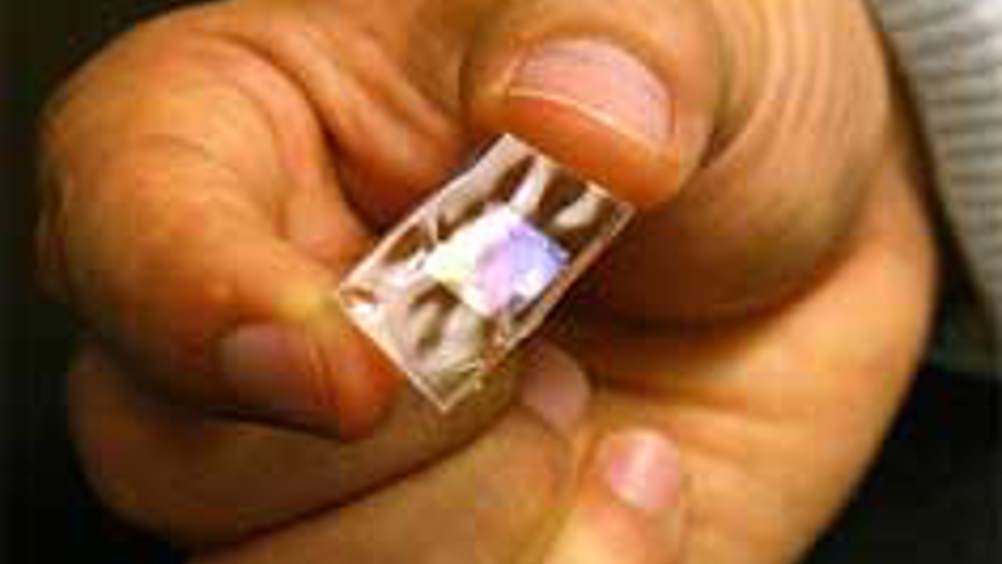Rubber films harness body movements
Power-generating rubber films developed by Princeton University engineers could harness natural body movements, such as breathing and walking, to power pacemakers, mobile phones and other electronic devices.

The material, composed of ceramic nanoribbons embedded onto silicone rubber sheets, generates electricity when flexed and is highly efficient at converting mechanical energy to electrical energy.
Shoes made of the material may one day harvest the pounding of walking and running to power mobile electrical devices. Placed against the lungs, sheets of the material could use breathing motions to power pacemakers, obviating the current need for surgical replacement of the batteries that power the devices.
The Princeton team claims to be the first to successfully combine silicone and nanoribbons of lead zirconate titanate (PZT) - a ceramic material that is piezoelectric. Of all piezoelectric materials, PZT is the most efficient and is able to convert 80 per cent of the mechanical energy applied to it into electrical energy.
‘PZT is 100 times more efficient than quartz, another piezoelectric material,’ said Michael McAlpine, an assistant professor of mechanical and aerospace engineering at Princeton, who led the project. ‘You don’t generate that much power from walking or breathing, so you want to harness it as efficiently as possible.
Register now to continue reading
Thanks for visiting The Engineer. You’ve now reached your monthly limit of news stories. Register for free to unlock unlimited access to all of our news coverage, as well as premium content including opinion, in-depth features and special reports.
Benefits of registering
-
In-depth insights and coverage of key emerging trends
-
Unrestricted access to special reports throughout the year
-
Daily technology news delivered straight to your inbox










National Gas receives funding to develop Gravitricity underground hydrogen storage system
One single rock salt mine - Winsford - has 23 <i>MILLION </i>cubic metres of void and even allowing for 10% of that void set aside for hazardous waste...